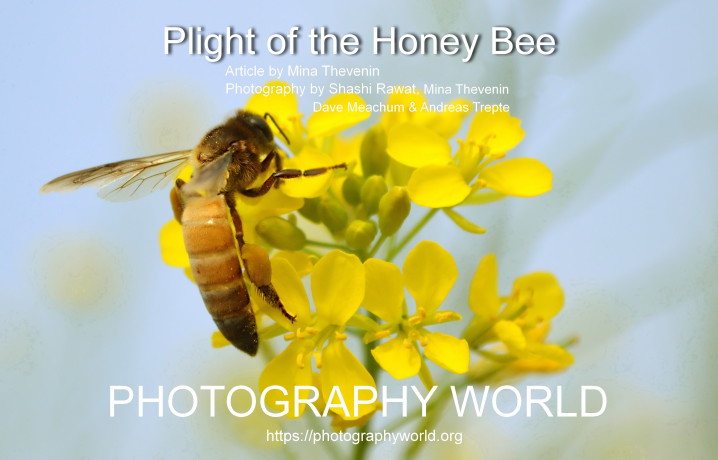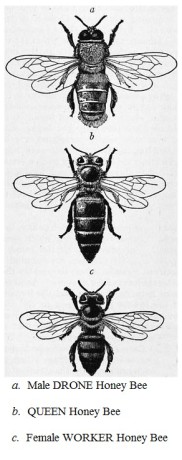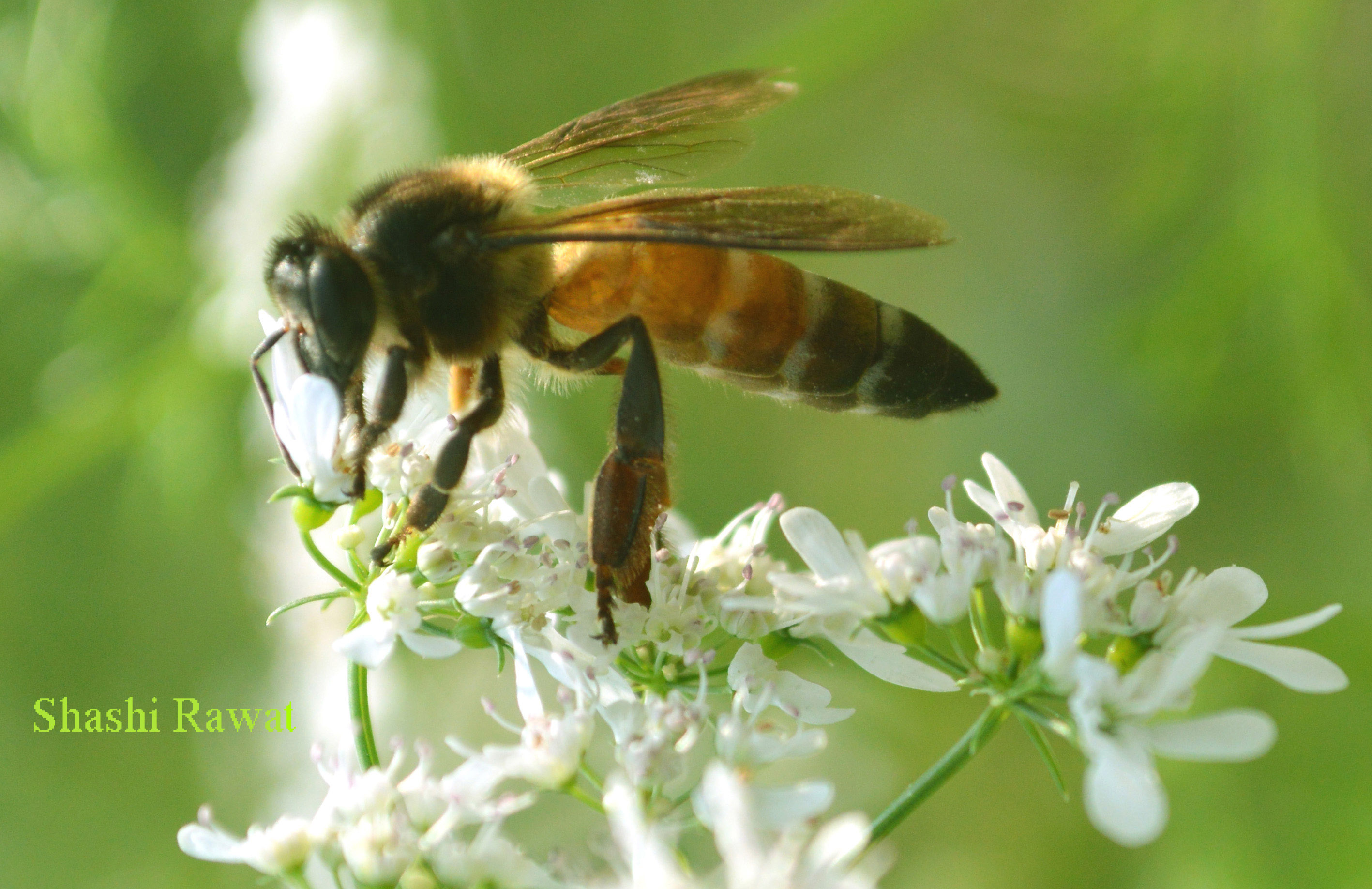PLIGHT OF THE HONEY BEE
Article by Mina Thevenin
Photographs by Shashi Rawat, Mina Thevenin, Dave Meachum and Andreas Trepte
The Honey Bee lives in complex societies.
Social creatures that live and work together in a colony, they are the honey bee. Studying the honey bee is known as melittology. With over 20,000 species of bees, the honey bee is but a small portion. Today there are seven recognized species of honey bee, with 44 sub-species. Living in beehives, honey bees or honeybees (both are correct), that live wild in nature will nest in large cavities such as hollowed-out trees or they will build their hive from a tree bough or over-hang. “Lots of pollen collection not only signifies blooming in the bee’s foraging range, but it also means that brood-rearing is underway in earnest in the hives,” Indian photographer Shashi Rawat.

Bees are referred to as eusocial, which means that the colony depends upon its queen for reproduction. A honey bee colony is divided into a caste system of three levels, all of which are important.
ONE QUEEN per hive is necessary for the hive to grow and survive because she is the only bee in the hive allowed to lay eggs for producing the next generation of bees. Once the queen has mated with several drones during her mating flight, she will be able to lay eggs the rest of her life and will never mate again. The queen lays between 1,000 to 3,000 eggs per day in a hexagonal beeswax cells. She controls the colony behaviors by releasing pheromones. Queens can live for several years, but if a queen dies or is lost, bee workers will then select a special few young worker larvae—feed them a “royal jelly”—so the few larvae develop into queens. If the hive does not have a queen, the hive will die. Queens have been known in the wild to live for three or even up to five years, providing she is healthy.
DRONES (males) are also important for the hive’s survival. These are the male bees whose sole purpose is to mate with the virgin queen for hive reproduction. Drones can live up to 90 days, but the mature drone will usually die after mating or will be thrown out of the hive when winter begins. Each hive will maintain 0 to 500 drones. Physically, they do not sting, are hefty and have larger eyes—compared to the worker bee. Why don’t they sting? Because they don’t have stingers. Drones travel from hive to hive searching for a virgin queen with which to mate and they are the only bee allowed to travel from hive to hive in their search for the queen.
WORKER BEES (females) are born only female. They are physically smaller than the Queen and Drones. One hive will have 2,000 to 60,000 workers. They work in the hive for the first three weeks after birth, at which time they develop wings and fly for food foraging; they live and work during the summer (30 days of life before they die, or longer, if they live in an area with an extended climate season) and “work” search for nectar, water, pollen and propolis for the hive. Can workers produce eggs? Yes—if a dying hive has lost its queen for a long time, a worker will lay unfertilized eggs (which produces drones only) in the hopes of sending out the drones to find and mate with a virgin queen. (1)
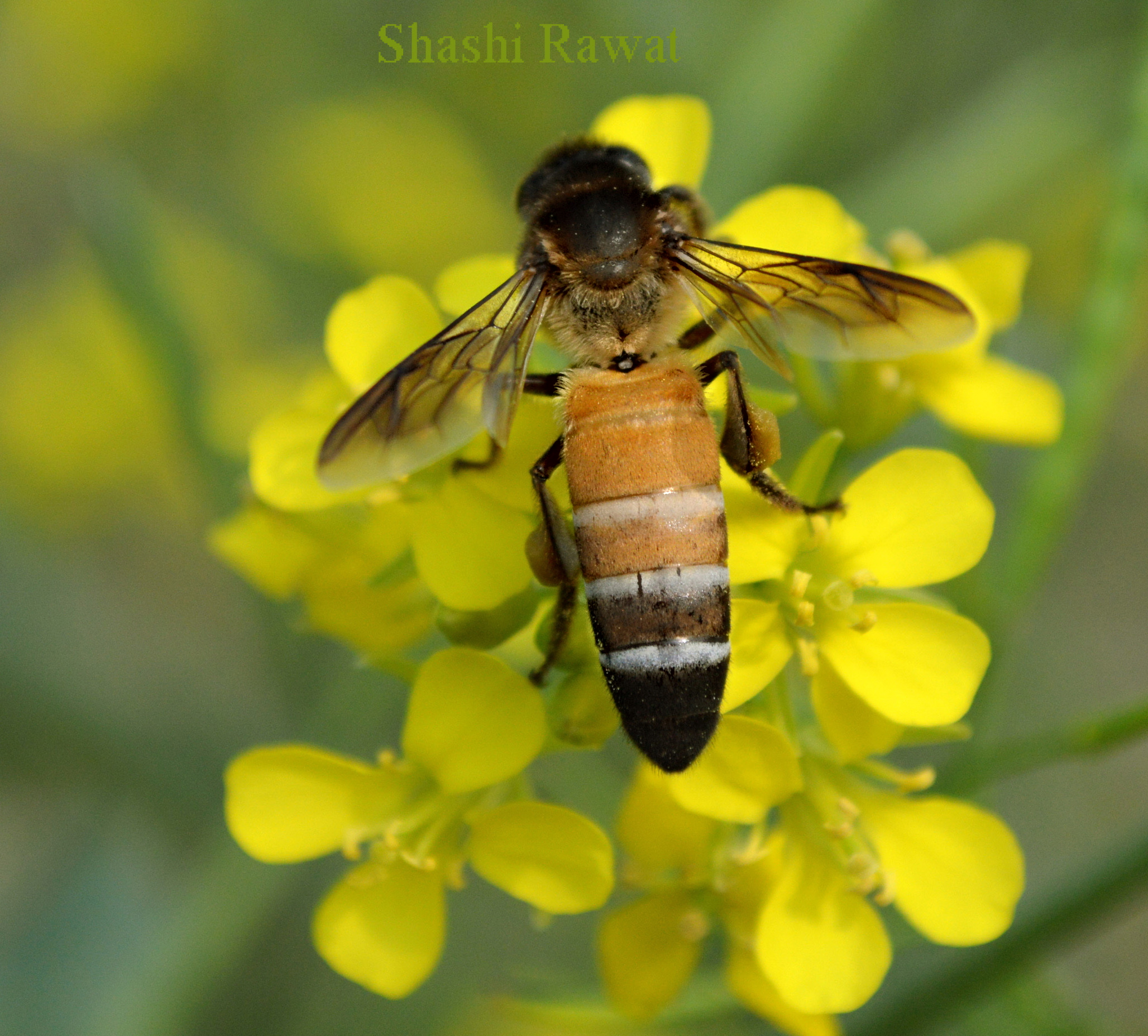
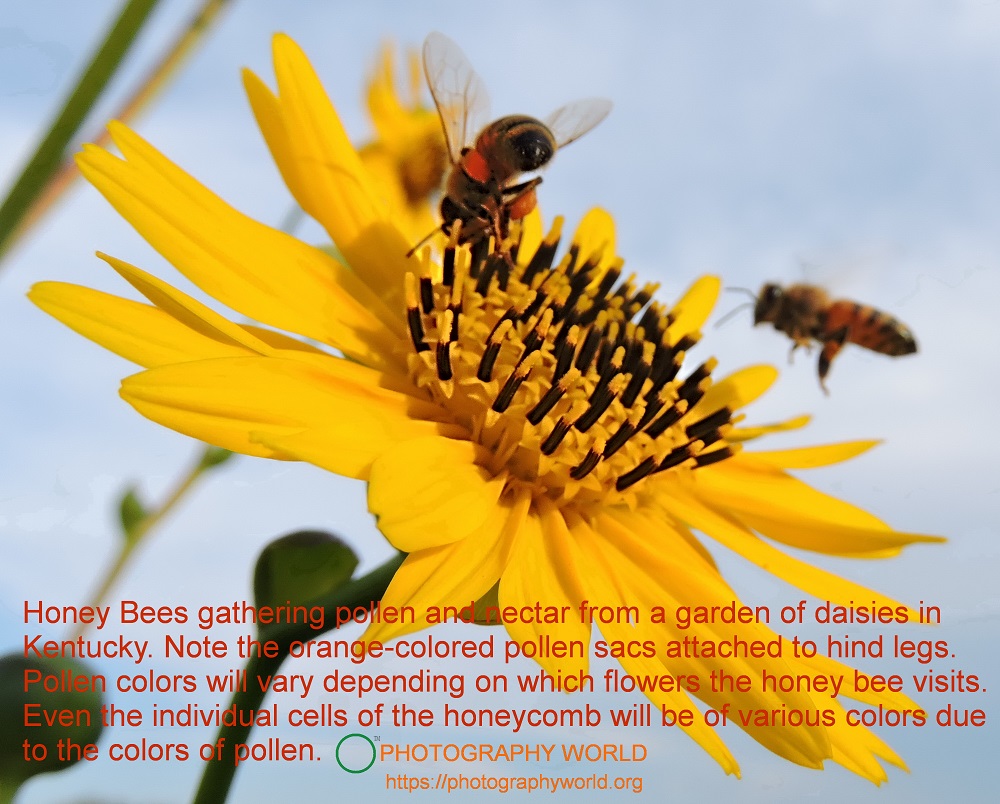
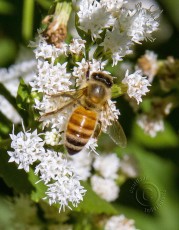
The Honey Bee is in the business of pollinating, making honey & more…!
According to the Importance of Bees in Nature,, a United National Food and Agriculture Organization publication, Rome 2009, by Nicola Bradbear, “Bees are part of ecosystems. Pollinators strongly influence ecological relationships, ecosystem conservation and stability, genetic variation in the plant community, floral diversity, specialization and evolution. Bees play an important, but little recognized role in most terrestrial ecosystems where there is green vegetation cover for at least 3 to 4 months each year. ” (2)
Usually a honey bee can visit between 50-1000 flowers in one trip, which takes between 30 minutes to four hours. In Europe, a bee can make between seven and 14 trips a day. A colony with 25,000 forager bees, each making 10 trips a day, is able to pollinate 250 million flowers.
Image below of a Western honey bee or European honey bee (Apis mellifera) details yellow pollen on the legs and the large pollen sac, which is part of the left hind legs.
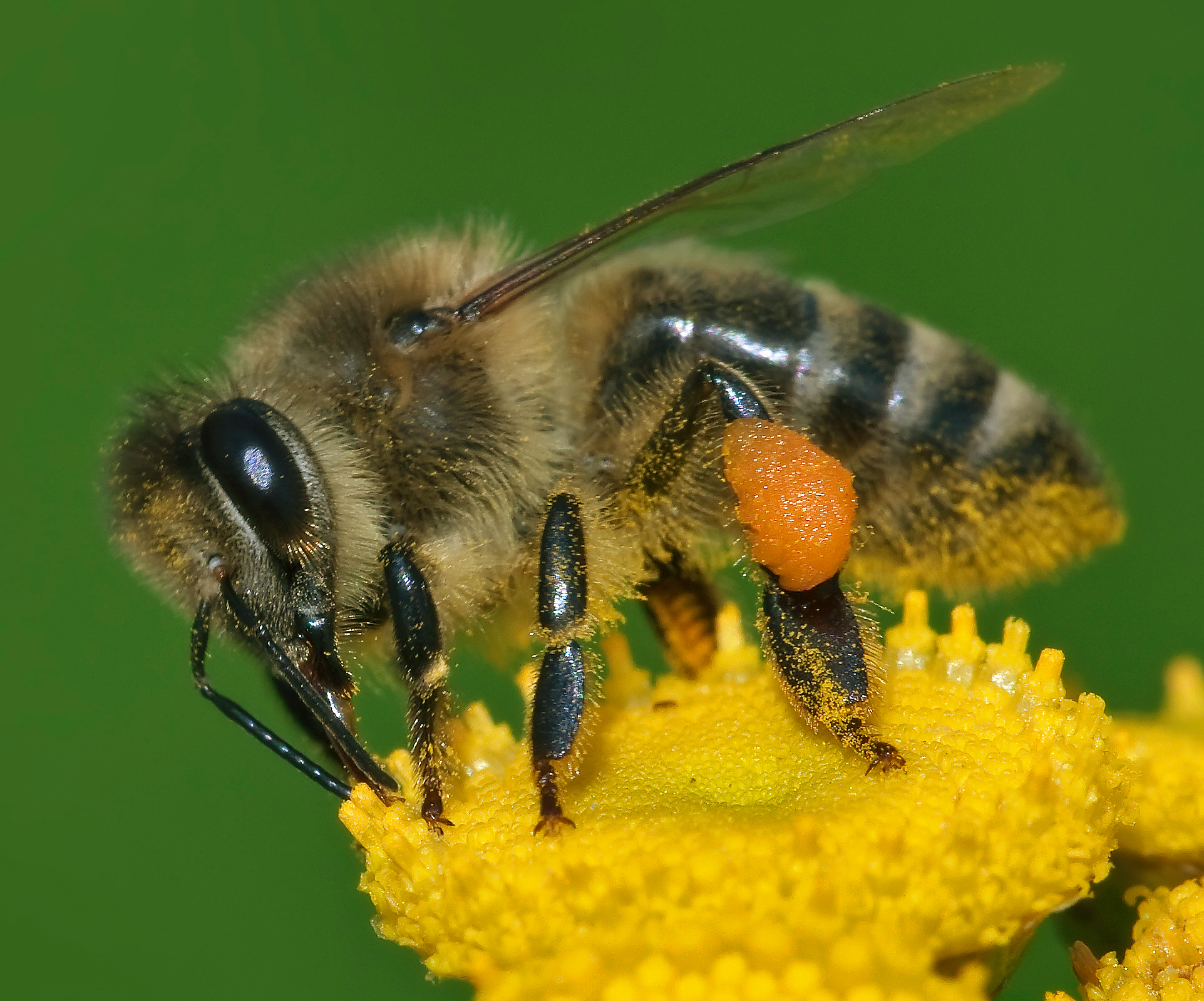
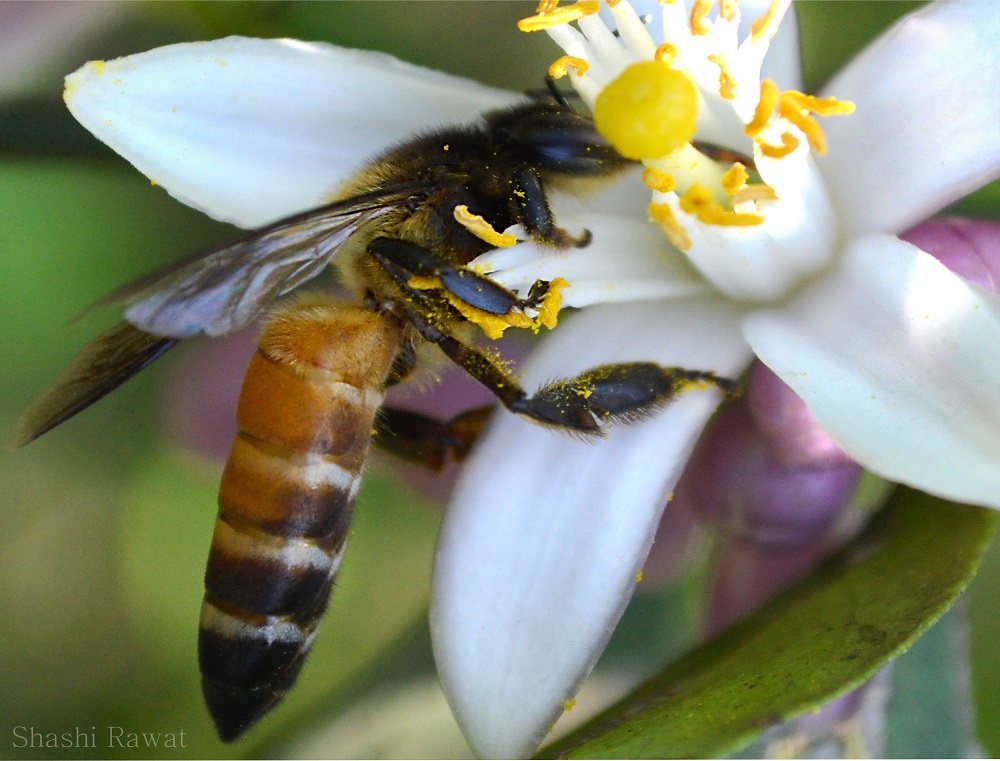
A part of Earth’s ecosystem for approximately 125 million years, bees have been pollinators. They also produce honey, honeycombs, beeswax, propolis, royal jelly, bee brood, and bee venom (3). Today, 80% of the grocery items on shelves derive from the benefits of the honey bee and pollination (4)— think fruits and vegetables.
The Western Honey Bees (Apis Mellifera) are disappearing.
Around the world, bees are disappearing at an alarming rate. Since 2006 honey bees have been vanishing and abandoning their hives for yet to be determined reasons. In the United States it is estimated that one-third of honey bee colonies have simply disappeared. Colony Collapse Disorder is the scientific name researchers have given the phenomenon. To date, the U.S. is at its lowest rate of honey bees in the past 50 years.
Why are hives and the honey bees disappearing in colony collapse disorder? Researches believe that there are several probable contributing factors.
- Pesticides
- Parasites (the microscopic *tracheal mite and the larger varroa mite; both mites are hosted by the Asian Honey Bee (Apis cerana) and the mites pose a threat to the European Honey Bee—currently under study by entomology groups) see below
- Loss of habitat
- Global Warming
It is the current situation of multiple mite infestations within the hive that the honey bees are unable to fight-off and recover. For example, imagine that a person has one serious primary illness and then develops a second primary illness that it attacking the system…very difficult to survive without intervention.
The Mites
*Tracheal mite is a microscopic parasite that attaches to the honey bee’s tracheae, where it reproduces; “Within 24 hours after the worker bees emerge from their cells, female mites collect within their tracheae. Studies have found that highest number of mites are found in 11-12 day old adult bees, and mite levels decline over 21 days old,” according to a Clemson University sudy on the Tracheal Mite.(5)
*Varroa Mite is an eight-legged arachnid that attaches itself like a tick to the worker bee’s abdomen and enters the hive unnoticed at the door. It is visible to the naked eye and appears as a brown disc shaped mite (eight legs). Like a tick, the Varroa is a “blood sucker”. The Varroa lays its eggs in the honeycomb, feeding on the developing larva brood. After eight to ten days the pathogen (viruses and bacteria) carrying mite spreads throughout the entire hive—wiping out whole colonies. “Without human intervention, infestation with varroa means certain death sooner or later for honey bees in Europe and America. Things are different in Asia, where the deadly mite originated. There, a balanced relationship between the parasite and its original host, the Eastern honey bee or Apis cerana, has evolved over many generations.”(6)
According to an Ohio University article by Kelly McConaghy Kershner and her interview with James E. Tew, associate professor of entomology at Ohio State and honeybee researcher with the Ohio Agricultural Research and Development Center (OARDC) in Wooster, Ohio.
SCIENTIST: HONEYBEES IN THE WILD NEARLY GONE IN NORTH AMERICA
COLUMBUS, Ohio — Honeybees in the wild in North America have been virtually wiped out by an unusually harsh winter, a soggy spring and two blood-sucking mites, an Ohio State University bee expert says.
“Honeybees in the wild are decimated,” said James E. Tew…Bee experts across the country agree that most of the wild or feral honeybees have likely been annihilated, Tew said.
Backyard gardeners will feel the impact in smaller yields and smaller, lower-quality fruits and vegetables, according to Tew.
“The harsh winter across the United States and the wet, messy spring, combined with all the routine problems facing bees that have never gone away — bee diseases, pesticide problems — pushed honeybees to the edge,” Tew said. “The mites, however,were clearly and definitively the last straw in causing this population collapse.”
Honeybee populations maintained by the nation’s beekeepers have also been reduced by mites, Tew said, although not as severely. Estimates of domesticated bee losses to mites vary from state to state, he said.
“Honeybees are not in danger of extinction. Beekeepers are still maintaining around 3 million colonies in the United States,” Tew said. “What’s much closer to extinction, however, is the unmanaged population of honeybees.”
The European honeybee, which was brought to the United States in the 1600s, is the country’s most important bee for crop pollination and honey production, Tew said. According to the OhioDepartment of Agriculture, more than 90 American crops valued at more than $9 billion depend on bees for pollination.
The two mighty mite culprits — the microscopic tracheal mite and the larger varroa mite — are invader species that made their way into the United States in the mid- to late ’80s. Tracheal mites do their damage by infesting the breathing tubes of the honeybee, puncturing the tracheal wall and sucking the bee’s blood. Varroa mites, on the other hand, attach themselves to the outside of both honeybees and their developing young to perform their blood-sucking duties. The two mites also often carry invading viruses. Tracheal and varroa mites spread when infested bees come in contact with bees from other hives or when uninfested bees raid the hives of weakened, infested bees, Tew said.
“These mites decrease the honeybee lifespan to almost nothing,” he said. “Many bees never emerge. When they do emerge, they’re so weakened or deformed that they’re nonfunctional. They don’t contribute to the output of the colony, and the whole population crashes and dies.
“If there had been tracheal mites only, there’s a good chance the wild honeybee populations could have recovered fairly quickly. But with the combined effects of the tracheal mites and varroa mites, it became too much of a challenge for bee populations to maintain themselves.”
Small and medium-sized fruit and vegetable growers and backyard gardeners will likely be hardest hit by the wild honeybee blight, Tew said.(7)
B E E W I L D L I F E
A Balance in Our Global Ecosystems
It is alleged that Albert Einstein said, “If the bee disappears from the surface of the earth, man would have no more than four years to live.”
Just as we consider other animals, i.e. Black-tailed prairie dog, the honey bee insect is a vital part of the health of our planet and our own wellness—our own survival. Science and history shows us that there is a natural ebb and flow to life and death of plants and animals—much of which is out of our control. Even with the European honey bee, aka the American honey bee or Western Honey bee (A.W.E. honey bee), the mites are perhaps the norm of nature’s ebb and flow; though could we have been more responsible initially with the mites that have infected the Western Honey Bee? Much of some—is in our control, i.e. use of pesticides, loss of animal habitat due to over-development, deforestation, and certain aspects of global warming. Generally, thinking ahead with prevention. We can be a solution for the honey bee’s plight.
_________________________________________________________
1. “Entomology: UGA Honey Bee Program: Bees, Beekeeping, and Pollination.”Getting Started: Honey Bee Biology. University of Georgia. College of Agricultural and Environmental Sciences, 29 May 2015. Web. 5 Mar. 2016. <http://www.ent.uga.edu/bees/get-started/biology.html>.
2. United States. Cong. Food and Agriculture Organization of the United Nations. Bees and Their Role in Forest Livelihoods. By Nicola Bradbear. Cong. Rept. N.p., n.d. Web. <http://www.fao.org/search/en/?cx=018170620143701104933%3Aqq82jsfba7w&q=honey+bees&cof=FORID%3A9&siteurl=www.fao.org%2Fhome%2Fen%2F&ref=&ss=1175j193323j10>.
3. ibid.
4. Tucker, Jessica. “How Bees Benefit Other Living Things.” One Green Planet. One Green Planet, 25 June 2014.. 5 Mar. 2016. <http://www.onegreenplanet.org/animalsandnature/how-bees-benefit-other-living-things/>.
5. Hood, William Michael. “Honey Bee Tracheal Mite.” : Extension : Clemson University : South Carolina. Department of Entomology, n.d. Web. 10 Mar. 2016. <http://www.clemson.edu/extension/beekeepers/factsheets/honey_bee_tracheal_mite.html>.
6. “A New Way of Protecting Bees against Varroa Mites | Bee Care.” A New Way of Protecting Bees against Varroa Mites | Bee Care. Bee Now, 11 Apr. 2013. Web. 10 Mar. 2016. <https://beecare.bayer.com/media-center/news/news-detail/a-new-way-of-protecting-bees-against-varroa-mites>.
7. McConaghy Kershner, Kelly. “Res/bees Gone/JUNE.” Res/bees Gone/JUNE. Ohio State University, n.d. Web. 9 Mar. 2016. <http://researchnews.osu.edu/archive/bee.htm>.
![]()
INDIAN PHOTOGRAPHER SHASHI RAWAT
 Inspiration for the Photography World article, Honey Bee, Photographer Shashi Rawat is a nature photographer and contributor to our efforts of education and commitment to a global consciousness of responsibility. We look forward to more of her photography in the future!
Inspiration for the Photography World article, Honey Bee, Photographer Shashi Rawat is a nature photographer and contributor to our efforts of education and commitment to a global consciousness of responsibility. We look forward to more of her photography in the future!
